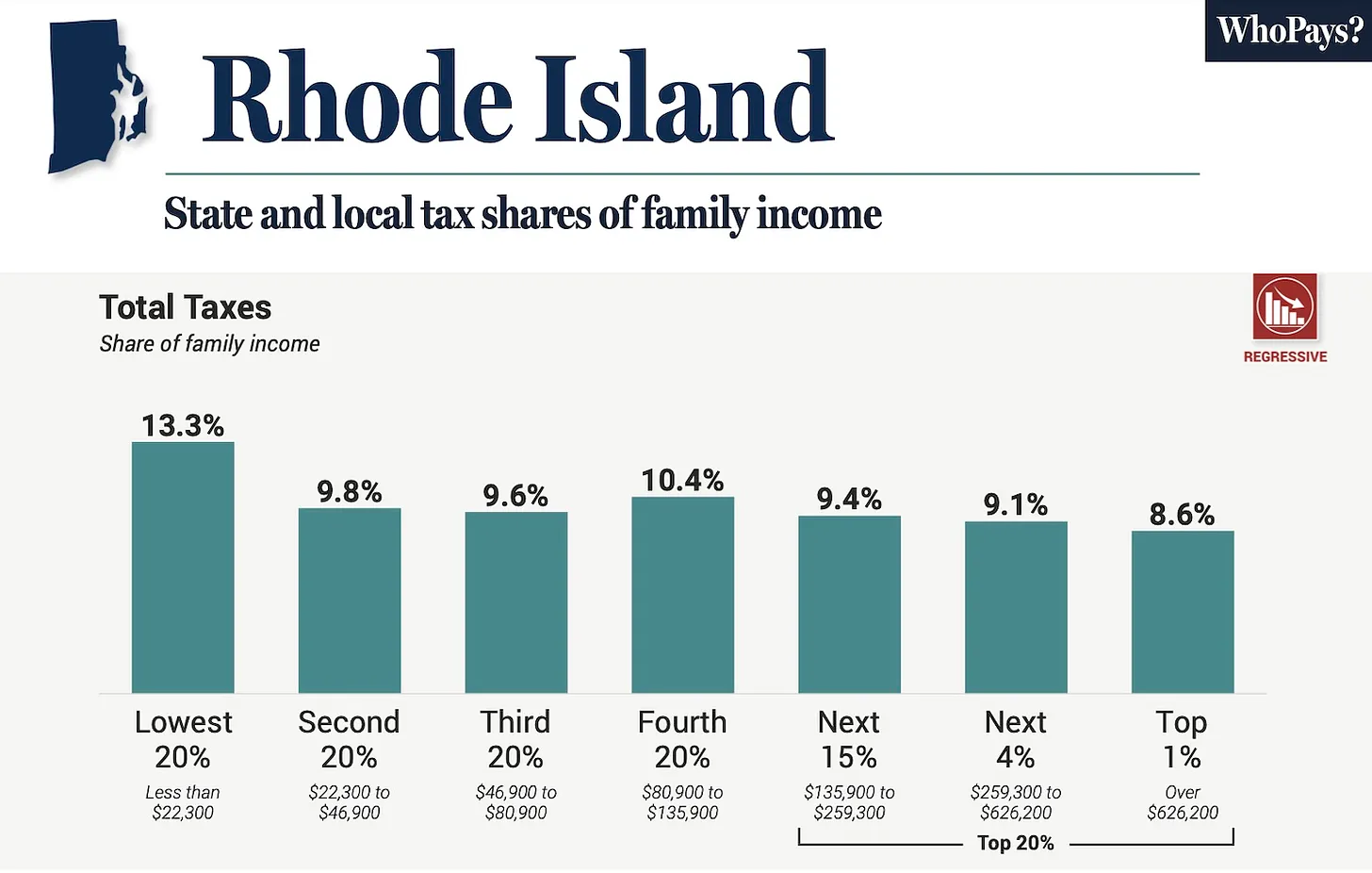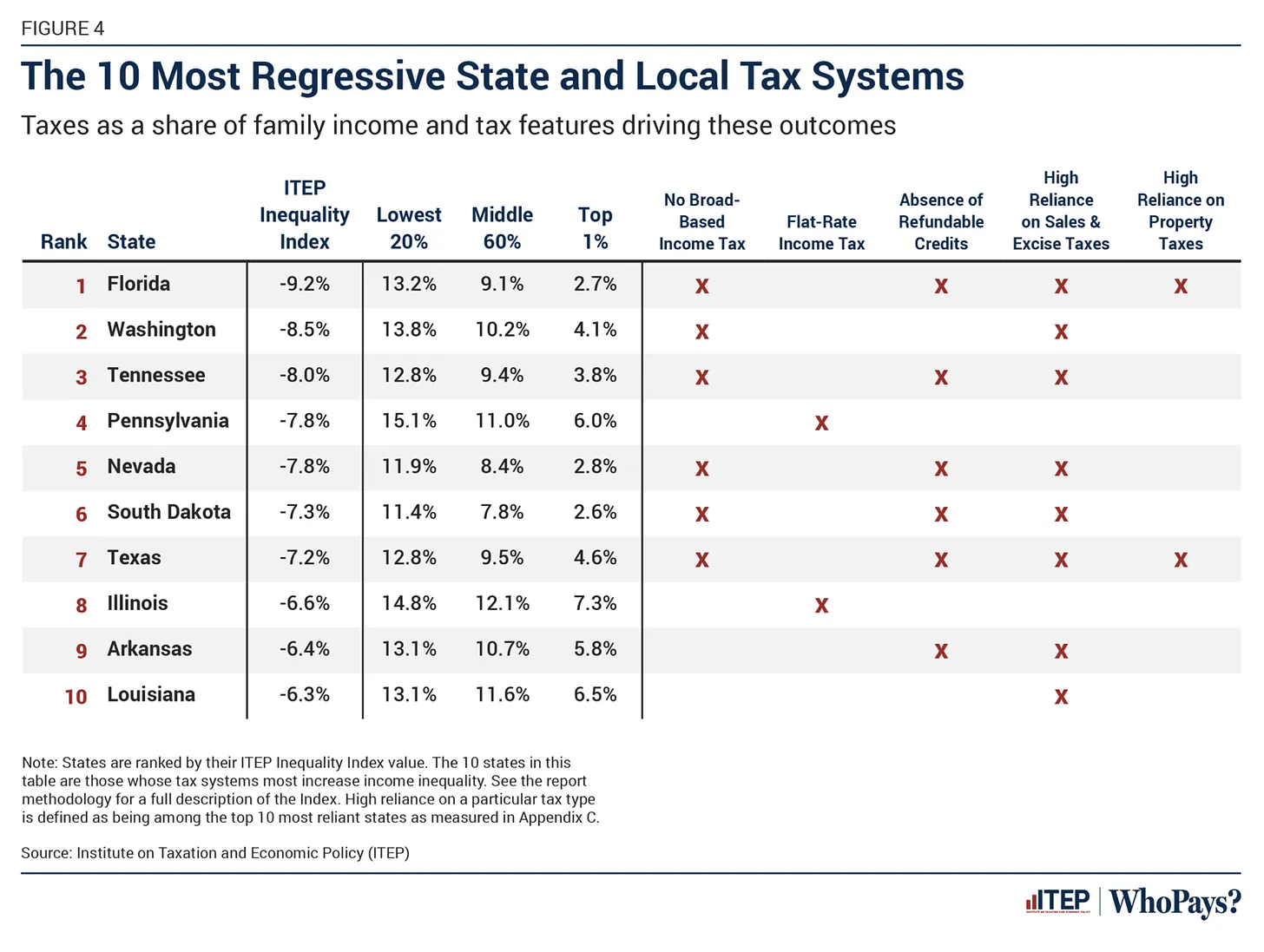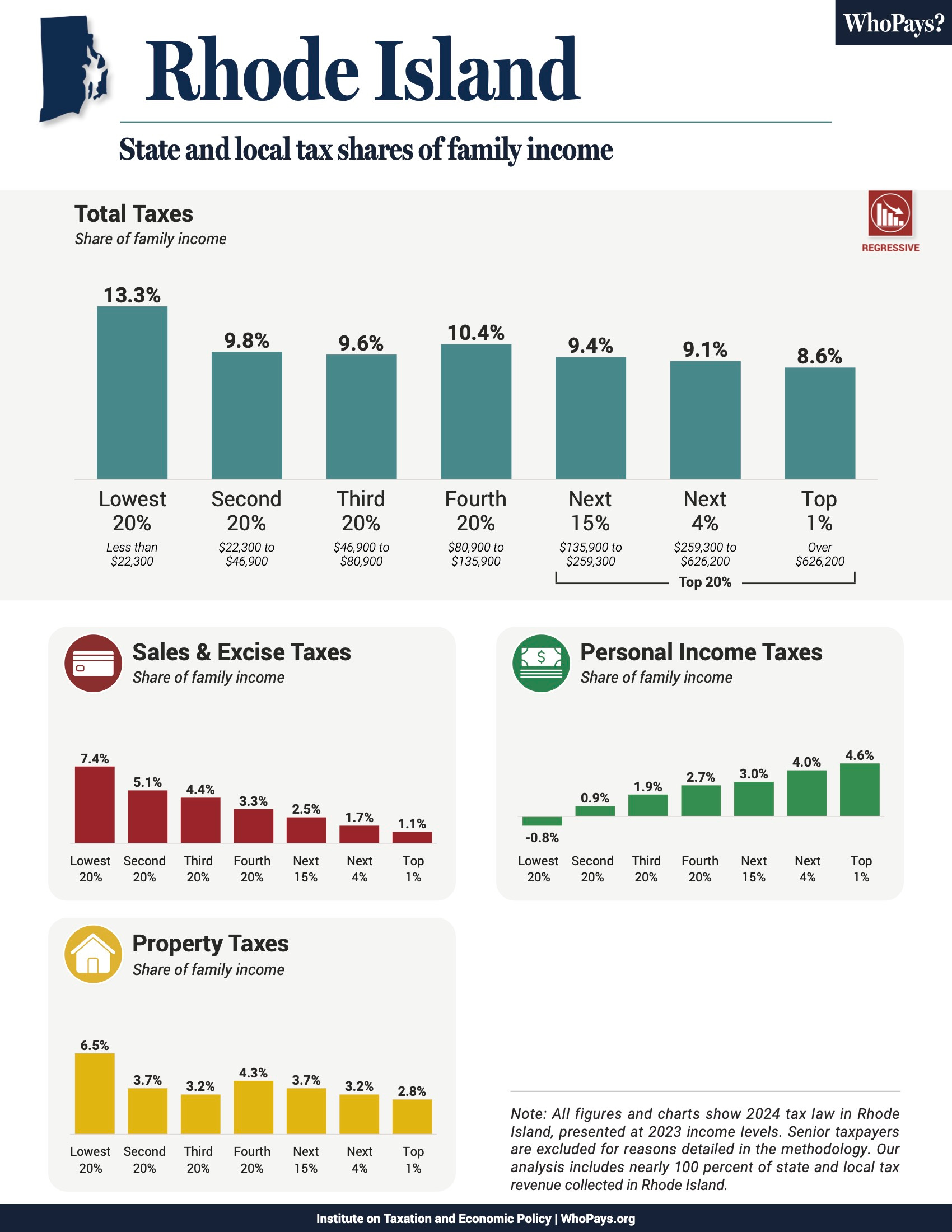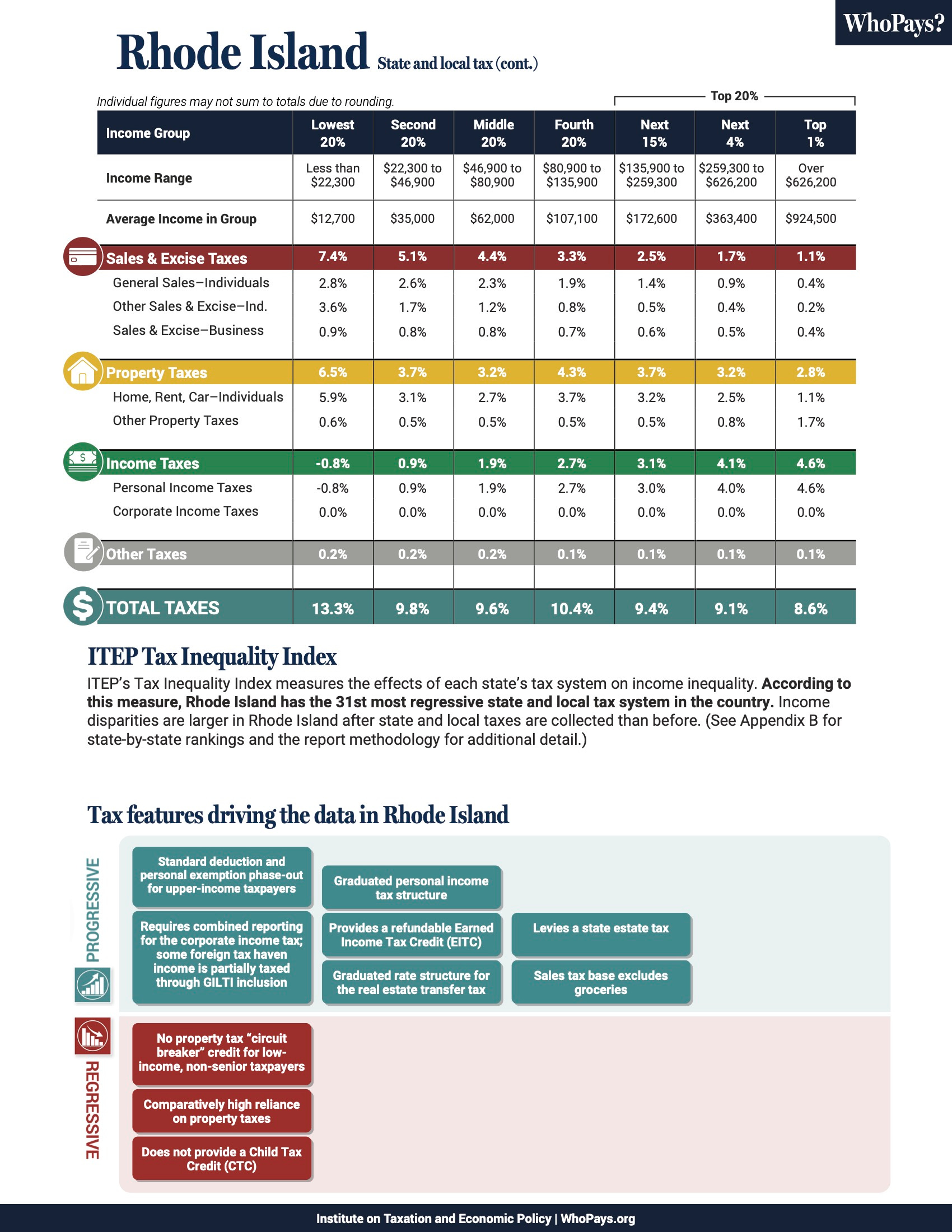Data shows RI's rich pay the least and the poorest pay the most
The Institute on Taxation and Economic Policy [ITEP] released a report on January 9 entitled Who Pays? a comprehensive report that “assesses the progressivity and regressivity of state tax systems by measuring effective state and local tax rates paid by all income groups.” In other words, the report assesses the fairness of our state and local tax system.
In national rankings featuring all 50 states and the
District of Columbia, Rhode Island ranks #31 out of 51 in terms of having a
regressive tax structure, meaning that the top one percent, those earning more
than $626,200 a year, are paying 8.6% of their income in taxes while those in
the lowest 20%, earning less than $22,300, are paying 13.3% of their income in
taxes.
I spoke to Alan Krinsky, Director of Research and
Fiscal Policy at the Economic Progress Institute [EPI]
to dig into the report with me. EPI is a “nonpartisan research and policy
organization dedicated to improving the economic well-being of low- and
modest-income Rhode Islanders.”
Steve Ahlquist: Rhode Island has the country's 31st
most regressive state and local tax system. One thing that jumped out at me is
that income disparity in Rhode Island grows larger after state and local taxes
are collected. Does this mean that the state's tax policies exasperate the
problem of income disparity?
Alan Krinsky: Yes. In other words, before we involve
state and local income taxes, there are disparities, [but] once we add in state
and local taxes, the disparities are somewhat worse. We want to get to where
the state isn't making things worse.
Steve Ahlquist: And maybe we could get to a place where the state is making things a little bit better, especially for low-income people.
Alan Krinsky: Correct. And I think about six states
on the list do that.
Steve Ahlquist: The report separates key elements of
Rode Island's tax policy into two broad categories, “progressive” and
“regressive.” Presumably, we could move towards a more fair tax policy by
lessening the impact of regressive policies and improving the impact of
progressive policies. So what should we be doing?
Alan Krinsky: I think there are a couple of ways to
go about this and things that could be done in the short term during this
legislative session. The first thing I would do is make the personal income tax
system more progressive by increasing taxes on the top 1%. Looking at the ITEP
charts, people in the top 1% of income pay the lowest percentage of their
income in state and local taxes compared to the other groups - and a lot less
than the lowest 20%.
Doing that, by itself, won't make our tax system
equitable. That won't get us to a place where the state is not making things
worse than before.
So at the other end would be something like decreasing
the tax burden on the lowest 20% by increasing the refundable state Earned Income Tax Credit and creating
a refundable child tax credit. Strengthening the estate
tax would also help because that's mostly affecting people at
the very top of the income chart.
Steve Ahlquist: One thing I hear from the other side
of this issue is that sure, the richest 1% are paying less, as a percentage of
their total income, but overall, they contribute more to the system than people
at the lower end.
Alan Krinsky: In terms of absolute dollars, that's
correct. The people who have the highest income - I don't have the numbers -
but they are paying more in absolute dollars. But if we think about the tax
burden and tax fairness, we can see that the tax burden on them is less than it
is on someone who's paying an absolute amount that's less but is consuming a
larger portion of their income.
Steve Ahlquist: It seems to me that a truly
progressive tax structure would be taxing the top 20% at a level that is higher
than those in the bottom 20%.
Alan Krinsky: We do have a somewhat progressive
income tax structure, but it's not progressive enough to shift that burden.
Steve Ahlquist: Nationally, we're hearing
President Joe Biden talk about what he's calling middle-out economics, and some people even
use the term bottom-up economics as opposed to the failed policies
of top-down or trickle-down
economics.
What ITEP seems to be suggesting is that states can align
themselves with these ideas by improving the status of lower-income and
middle-income people by shifting some of the burden to the highest-income
earners. In this way, we can get to a more fair tax system and also maybe do
good things for the economy as a whole. Does that make sense? And does that
make sense in the current political climate?
Alan Krinsky: I don't know that I can speak to the
political climate in Washington, but it makes sense. One of the interesting
things in the ITEP report is that it demonstrates a correlation between the
progressivity of the tax system and the amount of revenue that's raised. When
the tax system is more progressive overall, you're raising more revenue and
providing more and better services. What you're talking about, from a national
perspective, fits in with that model.
Another thing I'll point out: Even though Rhode Island
ranks 31 out of 50 states overall for our regressive tax system, we are one of
the 10 worst states for the lowest income group, the bottom 20%.
Steve Ahlquist: So basically you're saying that the
people in the lowest quintile are being hit harder than the data might suggest
by our 31st place ranking.
Looking at the following chart, you can see Rhode Island
taxes its poorest 20 percent of earners at rates greater than Florida,
Louisiana, Arkansas, and Texas.



